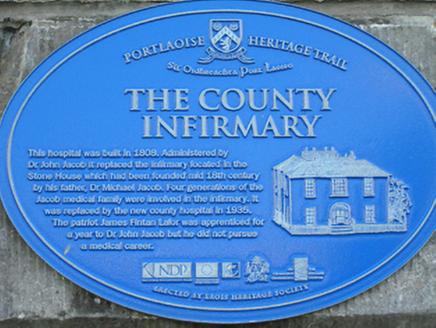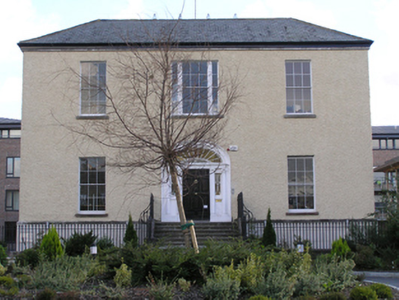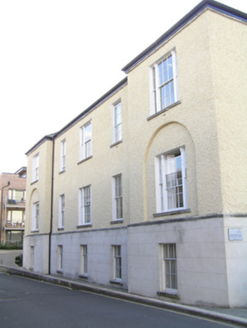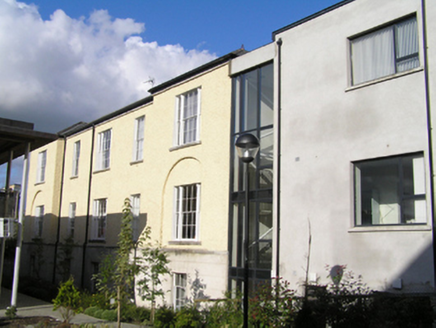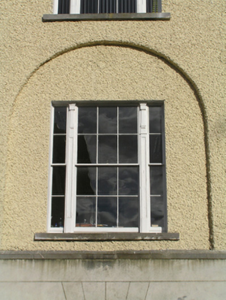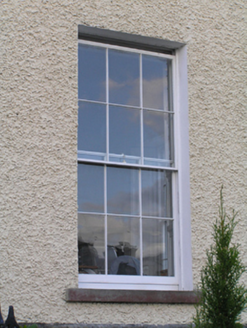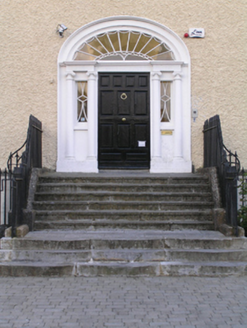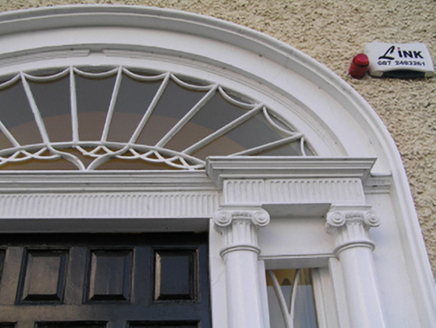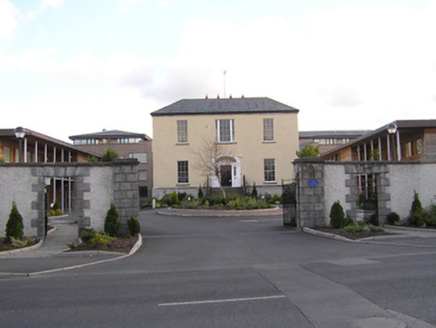Survey Data
Reg No
12505015
Rating
Regional
Categories of Special Interest
Architectural, Historical, Social
Previous Name
Queen's County Infirmary
Original Use
Hospital/infirmary
In Use As
Office
Date
1805 - 1810
Coordinates
247799, 198575
Date Recorded
29/08/2008
Date Updated
--/--/--
Description
Detached three-bay two-storey over basement former infirmary, built 1808, five-bay side elevations comprising advanced end bays with first floor Wyatt windows in recessed arch, flanking three recessed bays, renovated c. 2006 with three-storey rear extension, now in use as offices. Replacement hipped slate roof, clay ridge tiles, several chimneystacks with terracotta pots to the inner valleys, limestone ashlar eaves course, replacement metal rainwater goods. Painted pebbledash rendered walls, splayed limestone string course above cement ruled-and-lined rendered walls to basement, square-headed window openings with tooled limestone sills, central three-pointed arched door opening with projecting moulded reveal, door flanked by two pairs of engaged Ionic columns on single plinth block and fluted lintel cornice. Replacement six-over-six timber sash windows, Wyatt windows, some with decorative timber mullions, over front entrance and to the ground and first floors of the advanced end bays to both side elevations, three-over-six timber sash windows to basement, flat-panelled timber shutters to interior, original raised and fielded twelve panelled timber door with timber webbed and interlaced fanlight spanning entire doorcase and timber sidelights. Door opens onto limestone flagged platform with wrought-iron bootscraper and five limestone steps, a further limestone platform and three further steps, all flanked by limestone plinth wall and wrought-iron railings, wall and railing enclose paved basement area. Site has been extensively developed with modern offices and apartment blocks.
Appraisal
One of the most impressive and handsome Georgian period buildings in the town, it retains its dignified presence despite modern development within its site. It was built to replace an earlier infirmaryl in the town by Dr John Jacob. Four generations of the family were invoved with the infirmary, which was replaced by the new county hospital in 1935. Set behind its original entrance gates, it makes a significant contribution to the streetscape .
